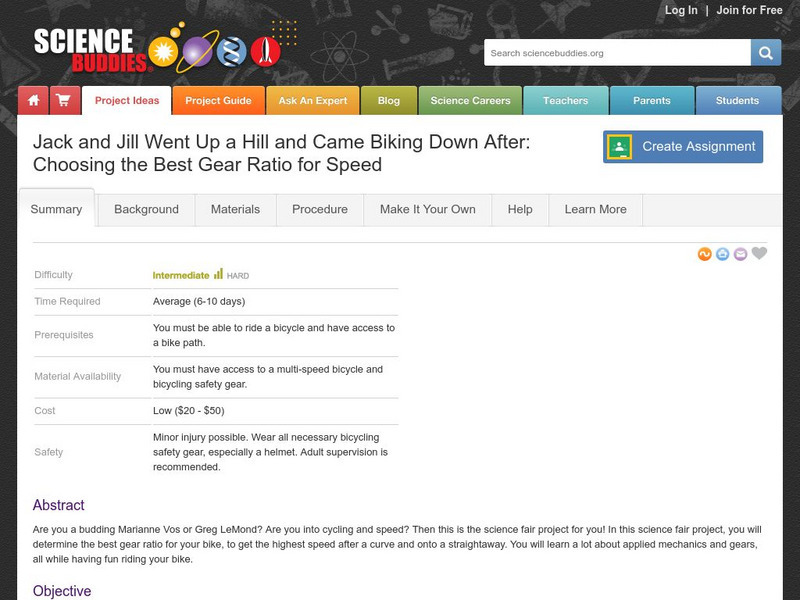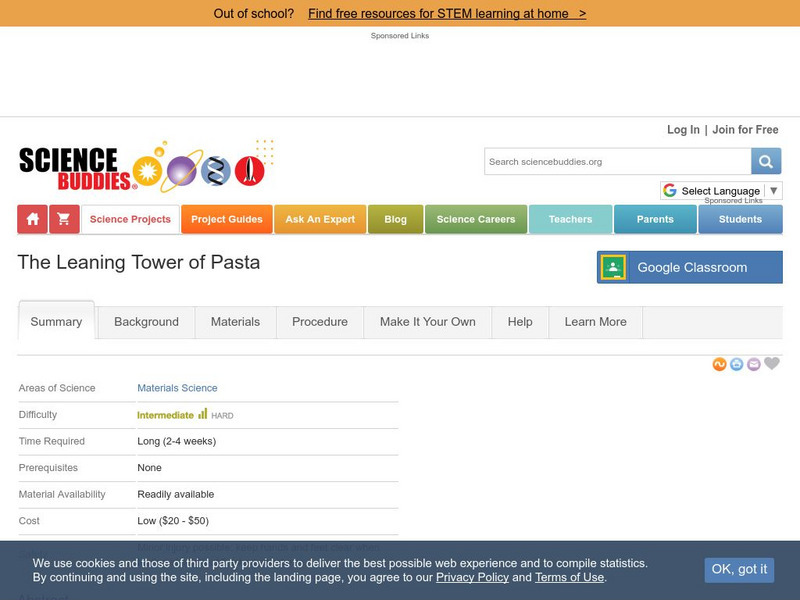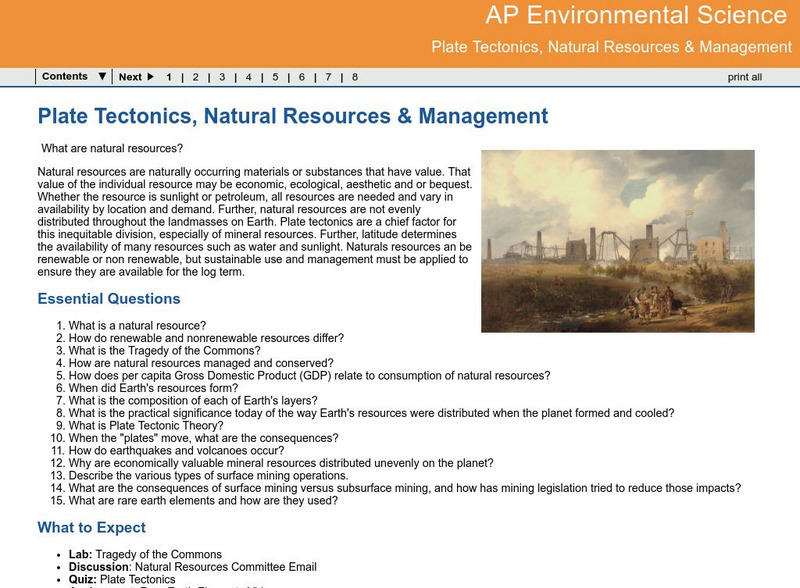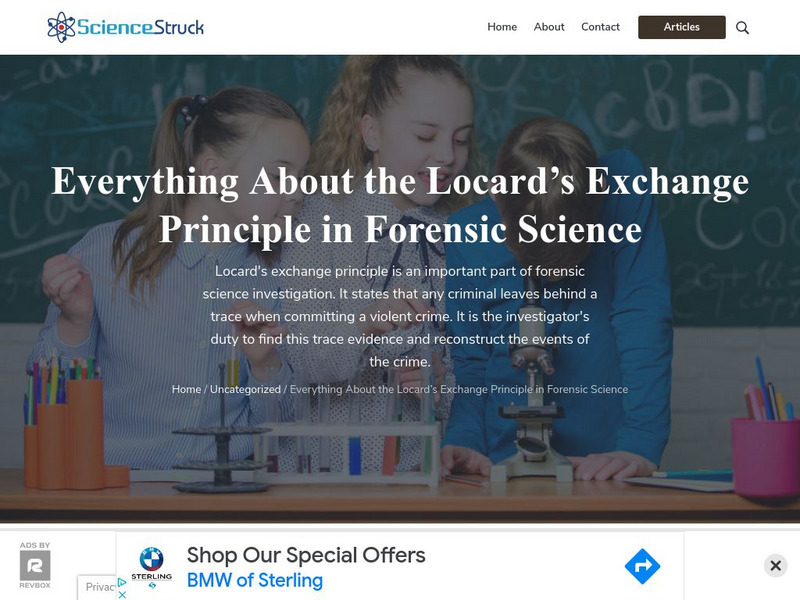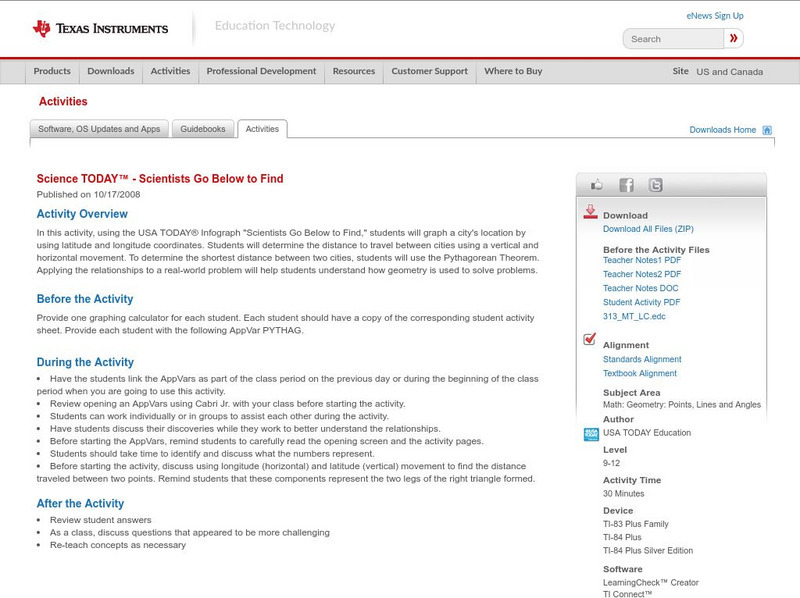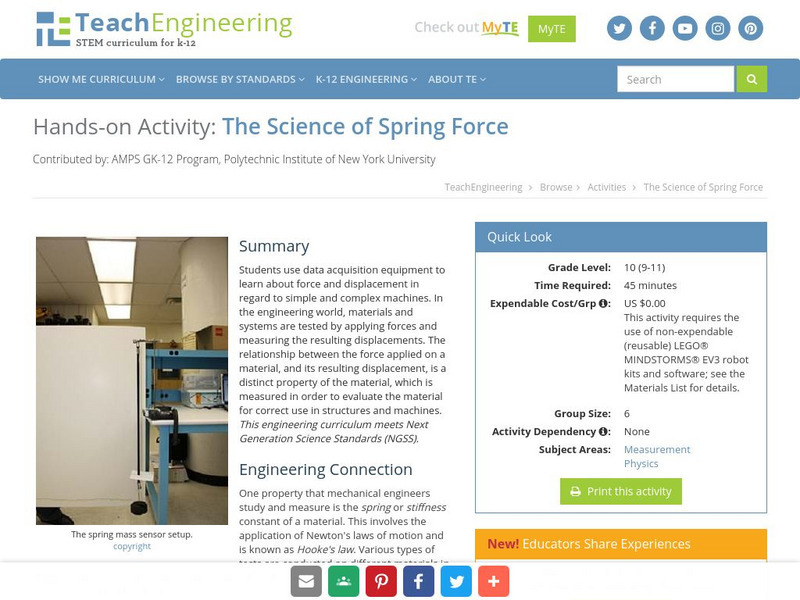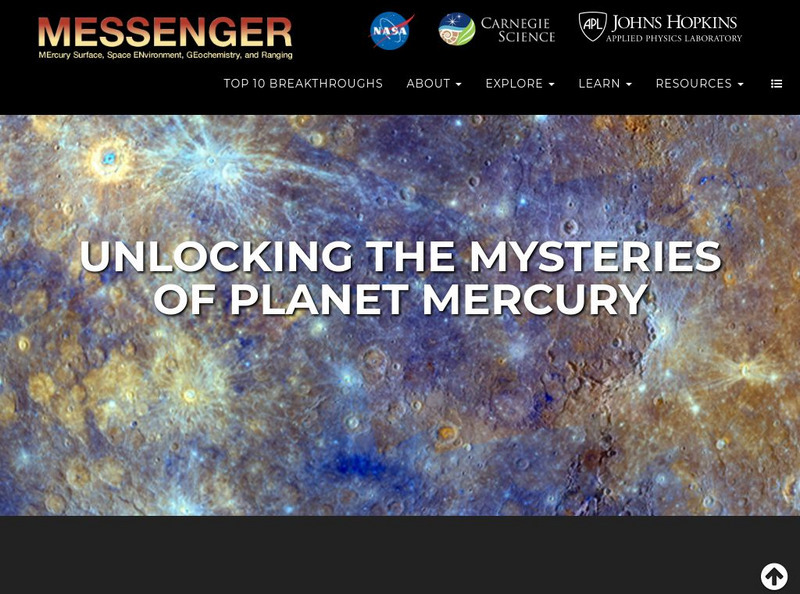New York State Education Department
TASC Transition Curriculum: Workshop 7
Designed specifically for math instructors, the seventh workshop of a 15-part series allows time to explore Webb's DOK, ponder open-ended questions, and create lessons to apply what is learned. Teachers craft high-quality math problems...
CK-12 Foundation
Ck 12: Life Science: 1.5 Basic and Applied Science
Get an overview of applied science where people use and apply information obtained through basic science.
Science Buddies
Science Buddies: Science Careers: Mathematician
Mathematicians work in many areas. Some are applied mathematicians, some theoretical, but all use mathematics as a way to figure things out by using deduction. This Science Buddies site lays out the requirements needed to become a...
Cosmo Learning
Cosmo Learning: Applied Science and Technology 210: Electrical Engineering
A collection of video lectures from a course that explores the application of electrical engineering topics. Webpage includes twenty-eight lectures from a professor at the University of California, Berkeley. Lectures vary in length and...
TeachEngineering
Teach Engineering: Hurricane! Saving Lives With Reasoning & Computer Science
Students develop and apply the distance formula and an x-y coordinate plane on a hurricane tracking map, and then use a map scale to determine distance in miles. Then, using MATLAB computer science programming language, students help...
Science Buddies
Science Buddies: Jack and Jill Went Up a Hill and Came Biking Down After
Are you a budding Lance Armstrong or Greg LeMond? Are you into cycling and speed? Then this is the science fair project for you. In this science fair project, you will determine the best gear ratio for your bike, to get the highest speed...
Science Buddies
Science Buddies: Career Profile: Computer Software Engineer
For those students interested in developing cool video game software for computer or those who enjoy applying their compter science skills to solve problems, a career as a computer software engineer might be worth examining. This Science...
Georgia Department of Education
Ga Virtual Learning: Ap Environmental Science: Course Introduction
An introduction to Environmental Science, an interdisciplinary field of study that integrates the biological and physical sciences in an effort to understand environmental systems, and the solutions to both man-made and natural...
Science Buddies
Science Buddies: The Leaning Tower of Pasta
Here's a project for a budding architect or structural engineer. Can you make a strong, lightweight tower using only uncooked spaghetti and white glue? In this project, you'll learn about materials testing and apply what you learn to...
Science Buddies
Science Buddies: Guitar Fundamentals: Wavelength, Frequency, & Speed
This is a rockin' project for guitarists with an interest in the physics behind music. If you have ever wondered why the pitch of the note changes when you fret the string, this project will help you understand by applying basic...
Georgia Department of Education
Ga Virtual Learning: Ap Environmental Science: Plate Tectonics,natural Resources
Through interactive activities and readings, students learn that natural resources can be renewable or nonrenewable, but sustainable use and management must be applied to ensure they are available for the long term.
Georgia Department of Education
Ga Virtual Learning: Physical Science: Force and Motion
In this student-paced module, students apply Newton's Laws of Motion to everyday life, calculate mathematical relationships involving force and motion using algebraic formulas, and understand the difference between mass and weight.
PBS
Pbs Learning Media: Newton's Triple Play: Baseball Science
In this lesson, students watch a video and animations that relate Isaac Newton's three laws of motion to baseball and apply what they've learned about these laws to another sport or other real-life situation.
Pennsylvania State University
Applied Physics: Experimental Research on Baseball Bat Vibrations
Fun science site that explores the vibrational behavior of a baseball/softball bat. Contains links to mode splitting in wood bats, controlling vibration, measuring the vibration of a baseball/softball bat and more!
TeachEngineering
Teach Engineering: Fun Look at Material Science
Students are introduced to the multidisciplinary field of material science. Through a class demo and PowerPoint presentation, they learn the basic classes of materials (metals, ceramics, polymers, composites) and how they differ from one...
Science Struck
Science Struck: Guide to Free Body Diagrams in Physics
A detailed explanation of the different types of forces that can be applied to an object and how to represent them in a free body diagram. Includes examples and some practice problems to try, with solutions provided.
Other
Met Office: Science: Creating Forecasts
Modern weather forecasting applies scientific knowledge to predict future atmospheric conditions across the globe from observations of the current state, made from land; at sea; in the air, and from space. Take a look at how scientists...
Science Struck
Science Struck: Locard's Exchange Principle in Forensic Science
'This resource describes some of the history of forensic science and what Locard's Exchange Principle is and how it is applied. Discusses the different types of trace evidence that investigators look for and some drawbacks of Locard's...
Exploratorium
Exploratorium: Science Snacks: Resonator
An experiment in resonance that demonstrates how to synchronize an applied force with an object's natural frequency and amplify the resulting motion.
Virtual Museum of Canada
Virtual Museum of Canada: Virtual Exhibit on Forensic Science
Discover the components of forensic science. There is also a link to a simulation in which you can apply your skills to solve a crime.
Texas Instruments
Texas Instruments: Science Today Scientists Go Below to Find
In this activity, using the USA TODAY Infograph "Scientists go below to find," students will graph a city's location by using latitude and longitude coordinates. Students will determine the distance to travel between cities using a...
Science Buddies
Science Buddies: Applying Hooke's Law: Make Your Own Spring Scale
Hooke's law says that the opposing force of a spring is directly proportional to the amount by which the spring is stretched. How accurately Hooke's law describe the behavior of real springs? Can springs be used to make accurate scales...
TeachEngineering
Teach Engineering: The Science of Spring Force
Students use data acquisition equipment to learn about force and displacement in regard to simple and complex machines. In the engineering world, materials and systems are tested by applying forces and measuring the resulting...
Johns Hopkins University
Applied Physics Laboratory: Messenger Home
Home page for NASA's Discovery Program Messenger to the planet Mercury. Site provides details of the planned mission, its experiments and the science and management teams. Linked Quicktime animation files are very large and detailed....
Other popular searches
- Grade 9 Applied Science
- Pure and Applied Science
- Edexcel Btec Applied Science
- Applied Science Physics
- Pure vs Applied Science
- Ks4 Applied Science
- Basic vs. Applied Science
- Bet Applied Science
- Basic vs Applied Science
- Btec Applied Science
- Applied Science Bartendng
- Ed Excel Bet Applied Science




